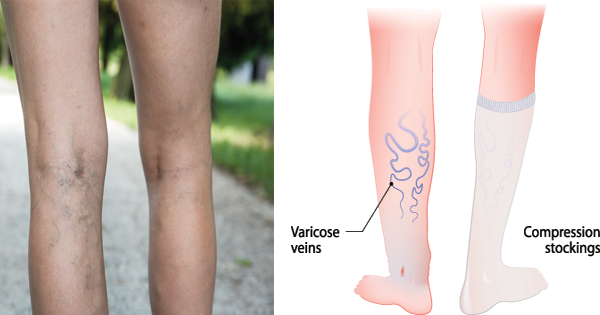Advertisement
Varicose veins and spider veins, despite being discussed often within the space of the same conversation, are not the same.
Varicose veins appear on the legs as large, swollen blood vessels that have become twisted and turned. They can physically protrude out of the leg.
Spider veins, in contrast, are thin veins that snake through the legs as spindly red, purple, and blue lines. They’re usually harmless, but can also be a sign of larger problems and lead to varicose veins developing.
Here’s what you should know about both conditions.
Although varicose veins and spider veins are different, the two conditions often derive from the same causes. These problems can be genetic; come about as a result of standing too much, being obese, or having hormonal imbalances; and be a symptom of deeper problems present in your body.
You cannot get varicose or spider veins by crossing your legs too much, or wearing high heels too often. These problems aren’t just cosmetic conditions. They do reveal longer-term health risks like blood clots, poor circulation, and deep vein thrombosis.
Treatment for varicose and spider veins is improving, but there’s still no proven way to completely remove their appearance. Dr. Greg Martin, MD, author of Say Goodbye to Varicose and Spider Veins Now!, says these conditions can be treated in ways that involves little scarring and anesthesia – but it’s still not 100% effective.
If cosmeticians claim they can completely remove the appearance of these veins, it’s more than likely a marketing scam.
You can, however, alleviate the symptoms and pain of varicose and spider veins by wearing compression stockings, using horse chestnut seed extract, and applying witch hazel.
The best way to avoid varicose or spider veins, experts say, is to exercise. Walking, climbing stairs, and doing toe raises are the most effective way of combatting the development of these conditions. These motions and exercises help strengthen your calf muscles and improve your circulation.
The unfortunate truth: It’s best to start lowering your risk of developing varicose or spider veins now than it is to attempt treating the conditions after they develop.




